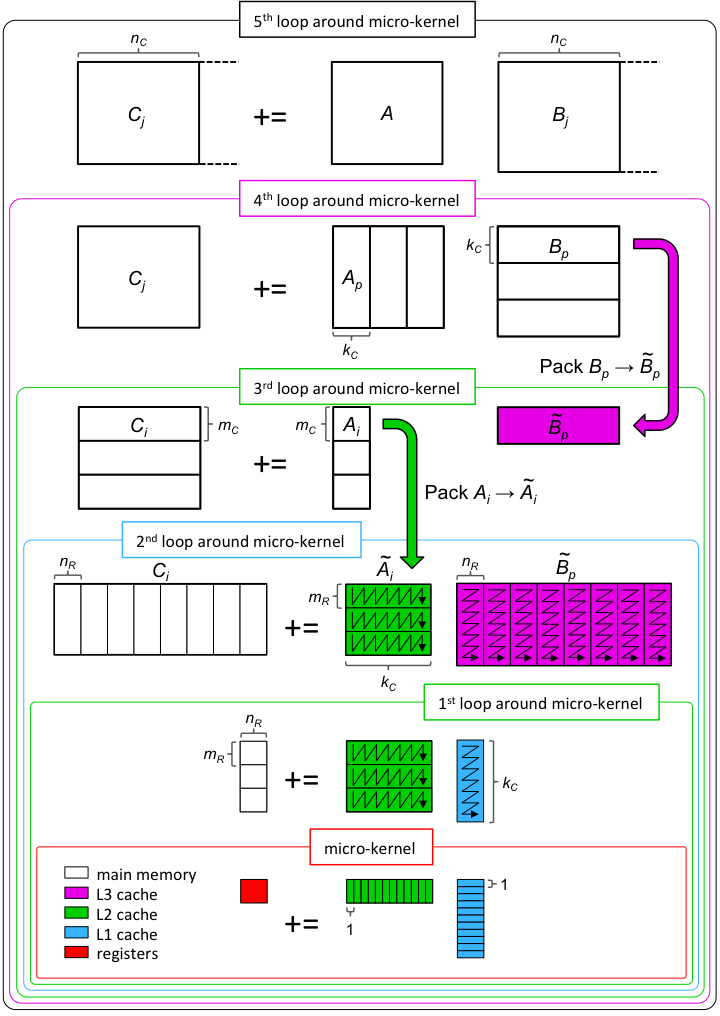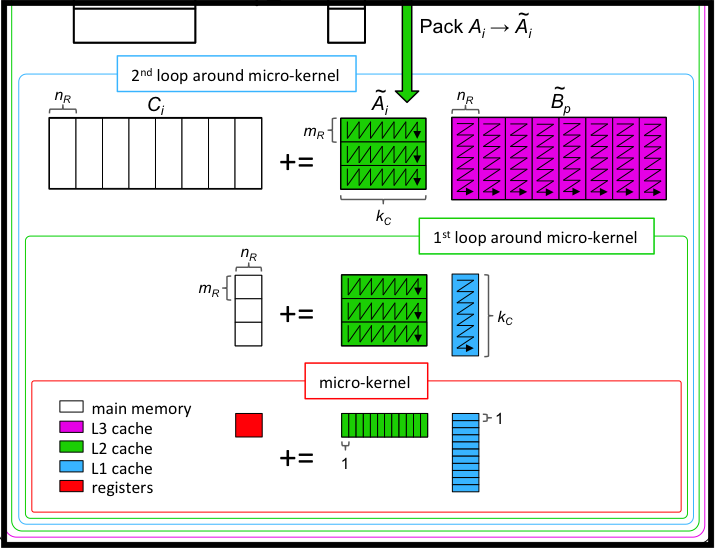Skip to main content Contents Prev Up Next \(
\usepackage{array}
\setlength{\oddsidemargin}{-0.0in}
\setlength{\evensidemargin}{-0.0in}
\setlength{\textheight}{8.75in}
\setlength{\textwidth}{6.5in}
\setlength{\topmargin}{-0.25in}
\newcommand{\R}{\mathbb R}
\newcommand{\Rm}{\mathbb R^m}
\newcommand{\Rn}{\mathbb R^n}
\newcommand{\Rnxn}{\mathbb R^{n \times n}}
\newcommand{\Rmxn}{\mathbb R^{m \times n}}
\newcommand{\Rmxm}{\mathbb R^{m \times m}}
\newcommand{\Rmxk}{\mathbb R^{m \times k}}
\newcommand{\Rkxn}{\mathbb R^{k \times n}}
\newcommand{\C}{\mathbb C}
\newcommand{\Cm}{\mathbb C^m}
\newcommand{\Cmxm}{\mathbb C^{m \times m}}
\newcommand{\Cnxn}{\mathbb C^{n \times n}}
\newcommand{\Cmxn}{\mathbb C^{m \times n}}
\newcommand{\Ckxk}{\mathbb C^{k \times k}}
\newcommand{\Cn}{\mathbb C^n}
\newcommand{\Ck}{\mathbb C^k}
\newcommand{\Null}{{\cal N}}
\newcommand{\Col}{{\cal C}}
\newcommand{\Rowspace}{{\cal R}}
\newcommand{\Span}{{\rm {Span}}}
\newcommand{\rank}{{\rm rank}}
\newcommand{\triu}{{\rm triu}}
\newcommand{\tril}{{\rm tril}}
\newcommand{\sign}{{\rm sign}}
\newcommand{\FlaTwoByTwo}[4]{
\left( \begin{array}{c | c}
#1 \amp #2 \\ \hline
#3 \amp #4
\end{array}
\right)
}
\newcommand{\FlaTwoByTwoSingleLine}[4]{
\left( \begin{array}{c c}
#1 \amp #2 \\
#3 \amp #4
\end{array}
\right)
}
\newcommand{\FlaTwoByTwoSingleLineNoPar}[4]{
\begin{array}{c c}
#1 \amp #2 \\
#3 \amp #4
\end{array}
}
\newcommand{\FlaOneByTwo}[2]{
\left( \begin{array}{c | c}
#1 \amp #2
\end{array}
\right)
}
\newcommand{\FlaOneByTwoSingleLine}[2]{
\left( \begin{array}{c c}
#1 \amp #2
\end{array}
\right)
}
\newcommand{\FlaTwoByOne}[2]{
\left( \begin{array}{c}
#1 \\ \hline
#2
\end{array}
\right)
}
\newcommand{\FlaTwoByOneSingleLine}[2]{
\left( \begin{array}{c}
#1 \\
#2
\end{array}
\right)
}
\newcommand{\FlaThreeByOneB}[3]{
\left( \begin{array}{c}
#1 \\ \hline
#2 \\
#3
\end{array}
\right)
}
\newcommand{\FlaThreeByOneT}[3]{
\left( \begin{array}{c}
#1 \\
#2 \\ \hline
#3
\end{array}
\right)
}
\newcommand{\FlaOneByThreeR}[3]{
\left( \begin{array}{c | c c}
#1 \amp #2 \amp #3
\end{array}
\right)
}
\newcommand{\FlaOneByThreeL}[3]{
\left( \begin{array}{c c | c}
#1 \amp #2 \amp #3
\end{array}
\right)
}
\newcommand{\FlaThreeByThreeBR}[9]{
\left( \begin{array}{c | c c}
#1 \amp #2 \amp #3 \\ \hline
#4 \amp #5 \amp #6 \\
#7 \amp #8 \amp #9
\end{array}
\right)
}
\newcommand{\FlaThreeByThreeTL}[9]{
\left( \begin{array}{c c | c}
#1 \amp #2 \amp #3 \\
#4 \amp #5 \amp #6 \\ \hline
#7 \amp #8 \amp #9
\end{array}
\right)
}
\newcommand{\diag}[1]{{\rm diag}( #1 )}
\newcommand{\URt}{{\sc HQR}}
\newcommand{\FlaAlgorithm}{
\begin{array}{|l|} \hline
\routinename \\ \hline
\partitionings \\
~~~ \begin{array}{l}
\partitionsizes
\end{array} \\
{\bf \color{blue} {while}~} \guard \\
~~~ \begin{array}{l}
\repartitionings
\end{array} \\
~~~ \color{red} { \begin{array}{l} \hline
\color{black} {\update} \\ \hline
\end{array}} \\
~~~ \begin{array}{l}
\moveboundaries
\end{array} \\
{\bf \color{blue} {endwhile}}
\\ \hline
\end{array}
}
\newcommand{\FlaAlgorithmWithInit}{
\begin{array}{|l|} \hline
\routinename \\ \hline
\initialize \\
\partitionings \\
~~~ \begin{array}{l}
\partitionsizes
\end{array} \\
{\bf \color{blue} {while}~} \guard \\
~~~ \begin{array}{l}
\repartitionings
\end{array} \\
~~~ \color{red} { \begin{array}{l} \hline
\color{black} {\update} \\ \hline
\end{array}} \\
~~~ \begin{array}{l}
\moveboundaries
\end{array} \\
{\bf \color{blue} {endwhile}}
\\ \hline
\end{array}
}
\newcommand{\FlaBlkAlgorithm}{
\begin{array}{|l|} \hline
\routinename \\ \hline
\partitionings \\
~~~ \begin{array}{l}
\partitionsizes
\end{array} \\
{\bf \color{blue} {while}~} \guard \\
~~~ {\bf choose~block~size~} \blocksize \\
~~~ \begin{array}{l}
\repartitionings
\end{array} \\
~~~ ~~~ \repartitionsizes \\
~~~ \color{red} { \begin{array}{l} \hline
\color{black} {\update} \\ \hline
\end{array}} \\
~~~ \begin{array}{l}
\moveboundaries
\end{array} \\
{\bf \color{blue} {endwhile}}
\\ \hline
\end{array}
}
\newcommand{\complexone}{
\begin{array}{|c|}\hline
\!\pm\!
\\ \hline
\end{array}~
}
\newcommand{\HQR}{{\rm HQR}}
\newcommand{\QR}{{\rm QR}}
\newcommand{\st}{{\rm \ s.t. }}
\newcommand{\QRQ}{{\rm {\normalsize \bf Q}{\rm \tiny R}}}
\newcommand{\QRR}{{\rm {\rm \tiny Q}{\bf \normalsize R}}}
\newcommand{\deltaalpha}{\delta\!\alpha}
\newcommand{\deltax}{\delta\!x}
\newcommand{\deltay}{\delta\!y}
\newcommand{\deltaz}{\delta\!z}
\newcommand{\deltaw}{\delta\!w}
\newcommand{\DeltaA}{\delta\!\!A}
\newcommand{\meps}{\epsilon_{\rm mach}}
\newcommand{\fl}[1]{{\rm fl( #1 )}}
\newcommand{\becomes}{:=}
\newcommand{\defrowvector}[2]{
\left(#1_0, #1_1, \ldots, #1_{#2-1}\right)
}
\newcommand{\tr}[1]{{#1}^T}
\newcommand{\LUpiv}[1]{{\rm LU}(#1)}
\newcommand{\maxi}{{\rm maxi}}
\newcommand{\Chol}[1]{{\rm Chol}( #1 )}
\newcommand{\lt}{<}
\newcommand{\gt}{>}
\newcommand{\amp}{&}
\definecolor{fillinmathshade}{gray}{0.9}
\newcommand{\fillinmath}[1]{\mathchoice{\colorbox{fillinmathshade}{$\displaystyle \phantom{\,#1\,}$}}{\colorbox{fillinmathshade}{$\textstyle \phantom{\,#1\,}$}}{\colorbox{fillinmathshade}{$\scriptstyle \phantom{\,#1\,}$}}{\colorbox{fillinmathshade}{$\scriptscriptstyle\phantom{\,#1\,}$}}}
\)
1 About
Date: Sept. 26-27, 2024 (Thursday-Friday)
Time (tentative): 8:30am - 5:00pm (CDT) on Thursday
8:30am - 1:00pm (CDT) on Friday
(with possible informal sessions Friday afternoon)
Format :
In person and online via Zoom
Location: GDC 6.302 (Faculty lounge), UT Austin
Workshop fee: None
Organizing Committee:
Maggie Myers, UT Austin
The BLAS-like Library Instantiation Software (BLIS) is a framework for rapid instantiation of high-performance libraries with Basic Linear Algebra Subprograms (BLAS) functionality. The framework is hosted on
GitHub 1 . This invitation-only annual workshop brings together various parties from academia and industry who have an interest in BLIS in particular and dense linear algebra libraries in general. If you would like to be invited, kindly contact Robert van de Geijn at
rvdg@cs.utexas.edu 2 .
This (twelfth) BLIS Retreat is an invitation-only workshop that brings together contributors to BLIS as well as those with a keen interest in the project.
The BLIS Retreats in 2013,
2014,
2015,
2016,
2017,
2018,
2019,
2020,
2021,
2022, and
2023 were well-attended by participants from academia, industry, and the government labs.
The following 45 minute talk
Field G Van Zee, Tyler M Smith, Bryan Marker, Tze Meng Low, Robert A Van De Geijn, Francisco D Igual, Mikhail Smelyanskiy, Xianyi Zhang, Michael Kistler, VernonrAMD Austel, John A Gunnels, Lee Killough
The BLIS Framework: Experiments in Portability
SIAM Conference on Parallel Processing for Scientific Computing (PP20)
SIAM Activity Group Best Paper Prize 2020
gives an introduction to BLIS for those who are newly initiated:


